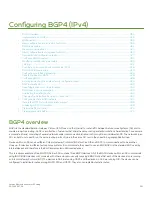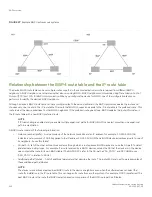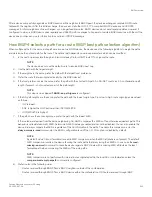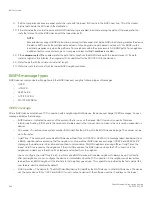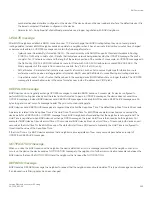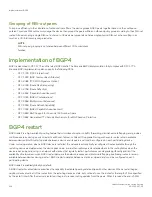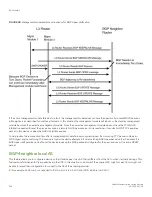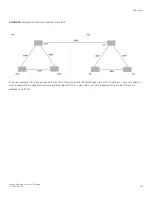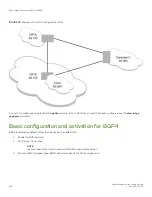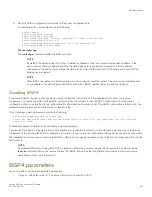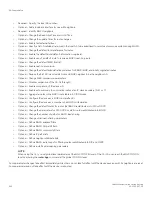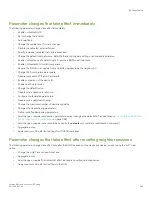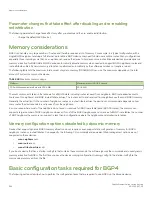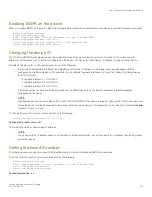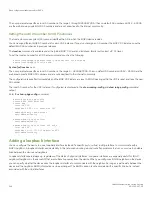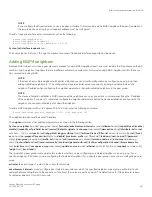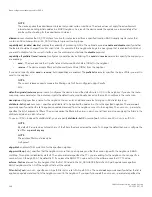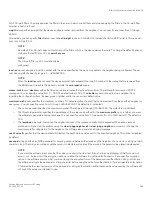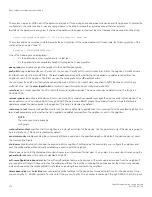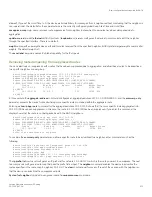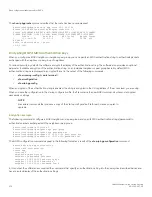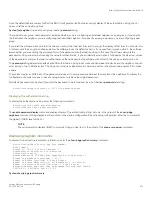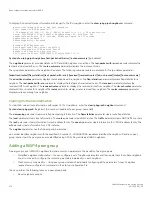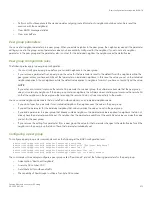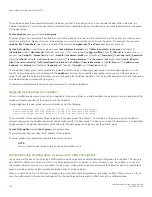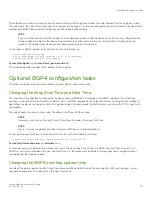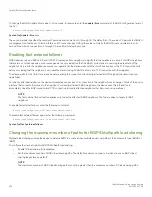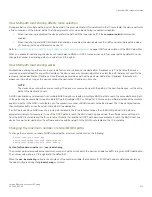
Parameter changes that take effect after disabling and re-enabling
redistribution
The following parameter change takes effect only after you disable and then re-enable redistribution:
•
Change the default MED (metric).
Memory considerations
BGP4 can handle a very large number of routes and therefore requires a lot of memory. For example, in a typical configuration with a
single BGP4 neighbor, receiving a full internet route table, a BGP4 device may need to hold over a million routes. Many configurations,
especially those involving more than one neighbor, can require the device to hold even more routes. Brocade devices provide dynamic
memory allocation for BGP4 data. BGP4 devices automatically allocate memory when needed to support BGP4 neighbors, routes and
route attribute entries. Dynamic memory allocation is performed automatically by the software and does not require a reload.
The following table lists the maximum total amount of system memory (DRAM) BGP4 can use. The maximum depends on the total
amount of system memory on the device.
TABLE 89
Maximum memory usage
Platform
Maximum memory BGP4 can use
FSX with Management module with 1536 MB
1336 MB
The memory amounts listed in the table are for all BGP4 data, including routes received from neighbors, BGP route advertisements
(routes sent to neighbors), and BGP route attribute entries. The routes sent to and received from neighbors use the most BGP4 memory.
Generally, the actual limit to the number of neighbors, routes, or route attribute entries the device can accommodate depends on how
many routes the device sends to and receives from the neighbors.
In some cases, where most of the neighbors do not send or receive a full BGP route table (about 80,000 routes), the memory can
support a larger number of BGP4 neighbors. However, if most of the BGP4 neighbors send or receive full BGP route tables, the number
of BGP neighbors the memory can support is less than in configurations where the neighbors send smaller route tables.
Memory configuration options obsoleted by dynamic memory
Devices that support dynamic BGP4 memory allocation do not require or even support static configuration of memory for BGP4
neighbors, routes, or route attributes. Consequently, the following CLI commands and equivalent Web management options are not
supported on these devices:
•
max-neighbors
num
•
max-routes
num
•
max-attribute-entries
num
If you boot a device that has a startup-config file that contains these commands, the software ignores the commands and uses dynamic
memory allocation for BGP4. The first time you save the device running configuration (running-config) to the startup-config file, the
commands are removed from the file.
Basic configuration tasks required for BGP4
The following sections describe how to perform the configuration tasks that are required to use BGP4 on the Brocade device.
Memory considerations
FastIron Ethernet Switch Layer 3 Routing
364
53-1003627-04
Summary of Contents for FastIron SX 1600
Page 2: ...FastIron Ethernet Switch Layer 3 Routing 2 53 1003627 04 ...
Page 16: ...FastIron Ethernet Switch Layer 3 Routing 16 53 1003627 04 ...
Page 20: ...FastIron Ethernet Switch Layer 3 Routing 20 53 1003627 04 ...
Page 142: ...FastIron Ethernet Switch Layer 3 Routing 142 53 1003627 04 ...
Page 150: ...FastIron Ethernet Switch Layer 3 Routing 150 53 1003627 04 ...
Page 200: ...FastIron Ethernet Switch Layer 3 Routing 200 53 1003627 04 ...
Page 214: ...FastIron Ethernet Switch Layer 3 Routing 214 53 1003627 04 ...
Page 350: ...FastIron Ethernet Switch Layer 3 Routing 350 53 1003627 04 ...
Page 476: ...FastIron Ethernet Switch Layer 3 Routing 476 53 1003627 04 ...
Page 588: ...FastIron Ethernet Switch Layer 3 Routing 588 53 1003627 04 ...


